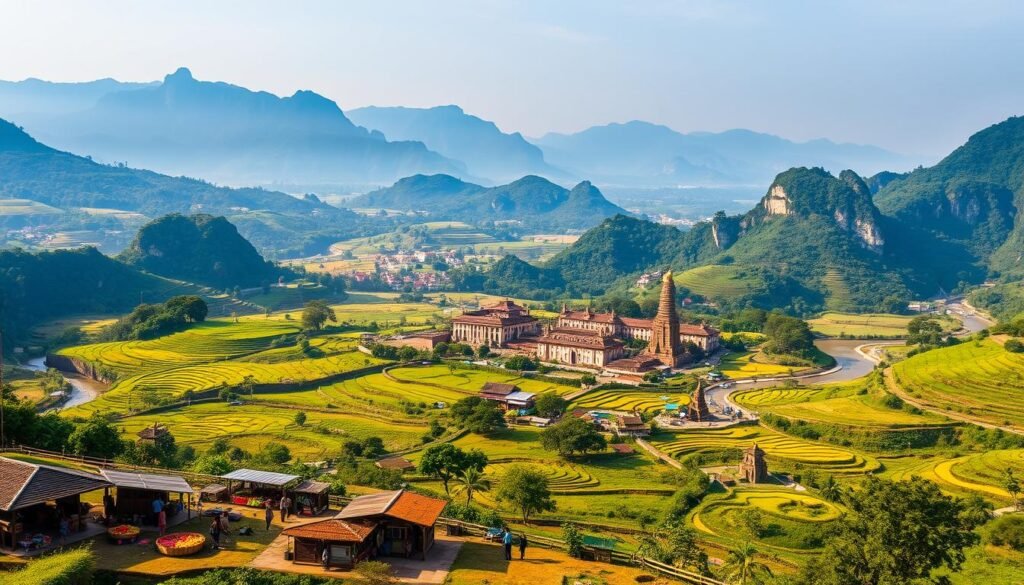Did you know Vietnam runs more than 1,000 miles north to south and holds three distinct weather systems? That span means my choice of dates must match the region I plan to explore.
I think of the country as three rhythms: the north has cool, dry winters and hot, wet summers; central areas stay hot and dry most of the year but face typhoons in autumn; the south stays warm year-round with a clear dry and rainy split.
This matters: trekking in Sapa or Ha Giang shines in spring and fall, coastal trips avoid storm months for smoother cruises, and southern beaches work well in the dry months.
I’ll walk through region-by-region and month-by-month guidance so I can plan my journey around sunshine, cooler temps, and fewer storms. For a handy climate overview while I plan, I’ll reference detailed weather notes from local seasonal guides.
Key Takeaways
- Vietnam’s long shape creates three distinct seasonal rhythms I must match to my plans.
- The north: cool, dry winters and rainy summers; trek in spring and fall.
- Central: long dry spell then typhoon risk in autumn—be cautious Oct–Nov.
- The south: warm year-round with a predictable dry season for beach days.
- Peak crowds and rates spike in July–August and around Tet, so I’ll plan for value.
Quick answer: When I plan the best weather across Vietnam
I narrow my travel windows around two clear shoulder seasons that suit most regions. March–April and September–November give me the best time balance of temperatures, sunshine, and lower rainfall across the north, central coast, and south.
If I want the Mekong Delta or southern beaches, I pick December–May for reliably dry days and easy planning. For central coast beach plans, February through August delivers the most sunshine before the wet season builds.
- I avoid July–August on the coast when crowds and rates spike, even if some areas stay beachy.
- The north shines in spring and autumn for city breaks and treks without summer humidity or winter chill.
- Tet in late January–February brings festive energy but fewer services and higher prices, so I plan around it.
Quick rule: when I have only a few days, I aim for the south’s dry season or the March–April shoulder window for easy comfort and reliable weather.
How Vietnam’s seasons work by region (so I never pack the wrong layers)

Vietnam’s climate shifts sharply by latitude, so packing right starts with the region I plan to explore.
North Vietnam
Winter runs roughly November through April with mild temperatures near 17–22°C (63–72°F). I pack layers and a light jacket for chilly mornings and evenings.
Summer (May–October) is hot humid and rainy, with highest rainfall July–September. I avoid Halong Bay cruises during peak storms since sailings can pause.
Central Vietnam
Central has a long dry spell from mid-January to August, so beach days and stable weather often fall in this window.
Then the region flips into a strong wet season in October–November when typhoons can strike. I note micro-variations: Hue is often cooler than Hoi An, while Nha Trang usually enjoys a longer dry stretch.
South Vietnam
The south stays warm year-round with temperatures about 25–35°C (77–95°F). Dry months run roughly November/December through April/May.You can learn more about best-time-to-visit-portugal
The wet season from May/June to November brings short, heavy afternoon showers, but mornings are often clear enough for tours.
- Packing tip: layers for the north, breathable clothes for hot months, and a compact rain jacket for wet-season windows.
- Safety: track typhoon alerts for central areas and pause bay sailings in peak storms.
| Region | Main season pattern | Typical temperatures | Notes |
|---|---|---|---|
| North Vietnam | Dry winter / rainy summer | 17–22°C (63–72°F) | Trek Mar–May & Sep–Nov; Halong Bay affected by storms |
| Central Vietnam | Long dry Jan–Aug / wet Oct–Nov | Warm, can be very hot | Typhoon risk in autumn; Hue cooler than Hoi An; Nha Trang drier Jan–Sep |
| South Vietnam | Dry Nov–Apr / wet May–Nov | 25–35°C (77–95°F) | Afternoon downpours common; mornings often clear during rains |
best time to visit vietnam: my golden windows
When I pick dates, I hunt for March–April or September–November for steady weather and thinner crowds. These windows give me clearer skies, lower humidity, and far better chances for outdoor plans across the country.
Spring and autumn sweet spots: March–April and September–November
March–April brings mild days in the north and pleasant sun along the coast. I often find parks, cruises, and treks more enjoyable then.
September–November returns comfortable temperatures in the north and eases rainfall in many areas. I stay alert for central storms in late autumn and check forecasts if Hue or Hoi An are on my list.
Shoulder, high, and low season trade-offs
Shoulder months usually mean good sunshine with lighter crowds and friendlier rates. That makes them my go-to for balance.You can learn more about best-places-to-visit-in-february
July–August is peak along the coast; prices can jump ~50% at popular spots. Tet in late January or early February also spikes rates and limits services, so I book early then.
- I pick central beaches mid-year for the safest beach days.
- I pick north spring or autumn for cooler city weather.
- Even in the rainy season, I plan mornings for outdoor activities and use flexible bookings.
Region-by-region playbook to match weather with your trip style
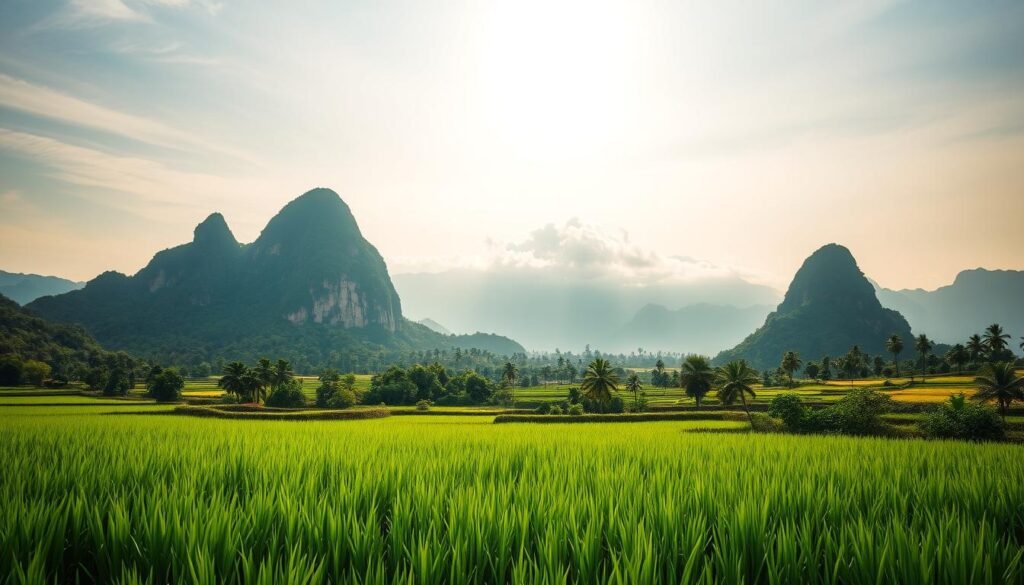
I match my trip style to each region’s climate so I get the days I want—treks, beaches, or city culture. Below I list practical windows and quick notes for planning.
North (Hanoi, Sapa, Ha Giang, Halong Bay)
I book treks in Sep–Nov or Mar–May for crisp views and steady temperatures. Winters can be cold in Dec–Jan, so I pack layers.
I avoid peak summer rains Jul–Sep. For Halong Bay, I aim for clearer conditions in Oct–Nov when cruises show blue skies.
Central Coast (Hue, Hoi An, Da Nang, Quy Nhon, Nha Trang)
This stretch gives long beach runs from Feb–Aug. I watch Sep–Nov for rising rainfall and typhoon risk.
Nha Trang often stays drier through Sep, so I use that when I want late-summer sand and sun.
South (Ho Chi Minh City, Mekong Delta, Phu Quoc, Con Dao)
The south is reliably warm. Dry Dec–May is ideal for beaches and Mekong Delta excursions.
Rainy Jun–Nov brings brief afternoon showers; I plan mornings for outdoor activities. Phu Quoc and Con Dao are flexible islands I visit during Dec–May for calmer seas.You can learn more about best-places-to-visit-in-january
Central Highlands & Dalat
I pick Nov–May for hiking and canyoning when the trails are drier. Expect frequent showers Jun–Oct and cool nights in Dec–Jan.
| Region | Season note | Typical temperatures | Planning tip |
|---|---|---|---|
| North | Trek Sep–Nov, Mar–May; cold Dec–Jan | 17–22°C | Aim for clear Halong Bay days; pack layers |
| Central Coast | Dry Feb–Aug; typhoon Sep–Nov | Warm to hot | Use Nha Trang for extended dry spells |
| South & Islands | Dry Dec–May; rains Jun–Nov | 25–35°C | Phu Quoc/Con Dao best Dec–May; mornings for tours |
| Central Highlands | Drier Nov–May; wet Jun–Oct | Cooler, variable | Book hikes in dry season; expect cool nights |
Month-by-month highlights I use to time activities

I map my travel calendar by practical weather windows so each day delivers the plan I want. My short notes below help me pick months for beaches, treks, wildlife, or festivals without guesswork.
December–February
I split days between the south’s dry season beach bliss and cool city breaks in Hanoi. Humidity drops and temperatures ease in the south. I watch for Tet in late January or February; it’s festive but brings closures.You can learn more about best-places-to-visit-in-costa-rica
March–April
This month window gives countrywide comfort. I schedule national park hikes and calm Halong Bay cruises when temperatures are friendly and sunshine is reliable.
May
May is a transition month. Heat and rain rise in many areas, yet central beaches still show blue skies near mid-80s°F.
June–August
I expect hot, humid north weather and steady central sunshine. The south shifts into the rainy season with bright mornings and heavy afternoon rain. Con Dao hosts turtle nesting and hatching from June through July–August.
September–November
These months are prime for northern treks as temperatures cool and humidity eases. I remain cautious around the central coast for typhoons and heavier rain.
- Quick tip: I use monthly patterns to plan indoor afternoons during showers and aim outdoor tours for clear mornings.
Beaches and islands: when I go for the clearest water and most sunny days
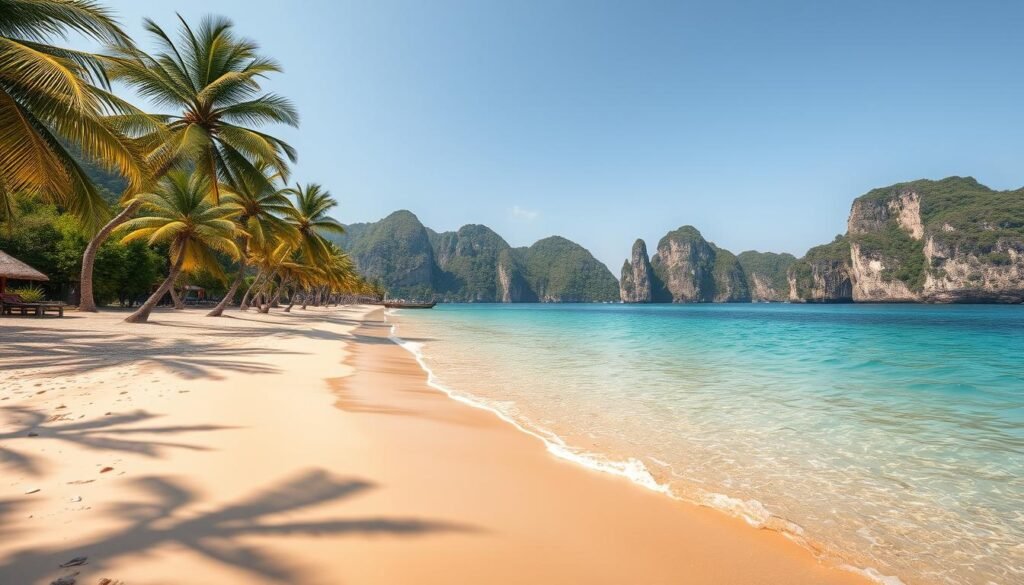
I plan beach days around which coast promises the clearest water and longest stretches of sun. That helps me pick islands and stretches that give calm seas and better visibility.You can learn more about best-places-to-visit-in-march
Phu Quoc and Con Dao
I visit phu quoc and con dao year-round, but I favor December–May in the dry season for the clearest water. I also schedule nights on Con Dao in June–August to watch turtle nesting and hatching.
Nha Trang and Quy Nhon
Nha trang and Quy Nhon are reliable from January through September. I avoid October–November when nearly half the annual rainfall can arrive in a short span.
Hoi An, Da Nang, and Hue
Hoi An, Da Nang, and Hue are beach-ready from February through August. In September–November the wet season can bring storms and local flooding, so I shift plans inland then.
- Practical tip: I book morning boat trips for calmer sea state and keep afternoons flexible for spa or markets.
- Logistics: Flights to Con Dao can be weather-dependent; I allow a buffer day via chi minh city.
| Coast/Island | Preferred window | Why I pick it |
|---|---|---|
| Phu Quoc | Dec–May | Calm seas, clear water for snorkeling |
| Con Dao | Dec–May; Jun–Aug for turtles | Stable beaches then rich wildlife nights |
| Nha Trang & Quy Nhon | Jan–Sep | Extended dry spell; avoid Oct–Nov rainfall |
| Hoi An/Da Nang/Hue | Feb–Aug | Sunny days and gentler seas; autumn brings storms |
City spotlight: timing Hanoi and Ho Chi Minh City for comfort and culture
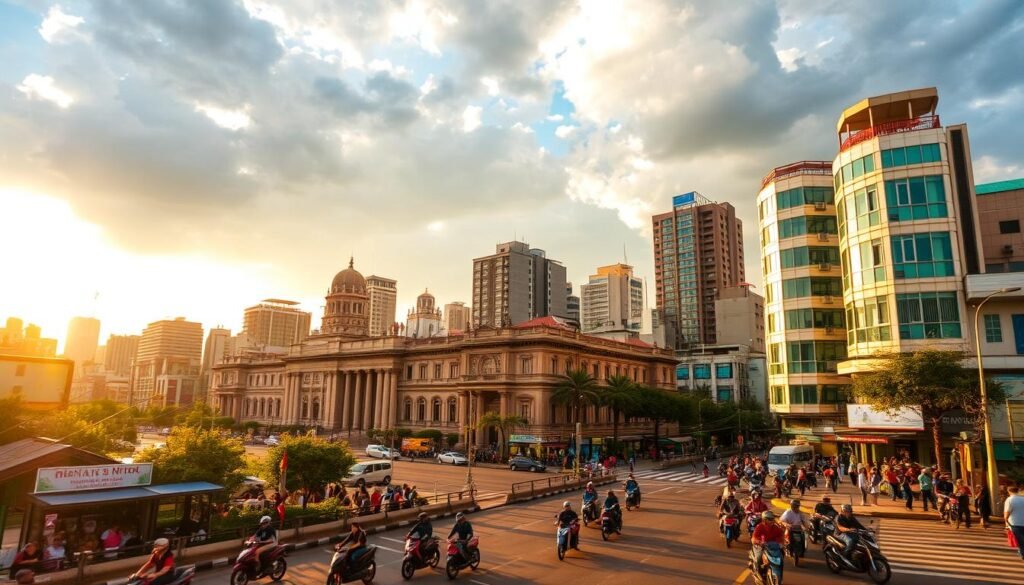
City weather shapes my days more than any map—so I plan Hanoi and Ho Chi Minh City around what I want to do each day.best-time-to-visit-grand-canyon
Hanoi and the north: autumn colors and spring sunshine beat winter chill
In the north, winter runs cool and often drizzly from November through April. The coldest stretch falls between January and March.
My strategy: I favor spring and autumn for milder temperatures, better light for photos, and long, walkable days without deep chill.
I schedule Halong Bay cruises in October–November when skies clear more often and sailing is smoother. I also build in a buffer day for any weather delays.
Ho Chi Minh City and the south: dry season Dec–May; rainy afternoons Jun–Nov
For the south, chi minh city feels best during the dry stretch from December through May. Lower humidity and steady sunshine make rooftop pools and evening markets ideal.
From June to November the city sees heavy, brief afternoon showers. I plan outdoor tours in the mornings, then visit galleries or coffeehouses once showers arrive.
“When I want lush river landscapes, I use the Mekong Delta’s rainy months for dramatic skies and vivid green fields.”
- I track daily temperatures so I can schedule breaks in the late dry season when Ho Chi Minh gets hottest.
- During Tet both cities turn festive; I book early and check opening hours.
- I pick Hanoi for crisp autumn light and chi minh city for warm, sunny days.
| City | Best city months | Why I pick it |
|---|---|---|
| Hanoi (north) | Mar–Apr, Sep–Nov | Milder temps, clearer light, good for walking and photos |
| Halong Bay (near Hanoi) | Oct–Nov | More stable seas and clearer cruise days; allow a buffer |
| Ho Chi Minh City (south vietnam) | Dec–May | Dry, sunny days ideal for outdoor dining and tours |
| Mekong Delta | Jun–Nov (for green season) | Lush scenery, lively floating markets, dramatic skies |
For a fuller monthly planning guide, I reference a detailed seasonal write-up at visit vietnam monthly guide.
Smart planning: how I book, pack, and pivot for Vietnam’s wet and dry seasons
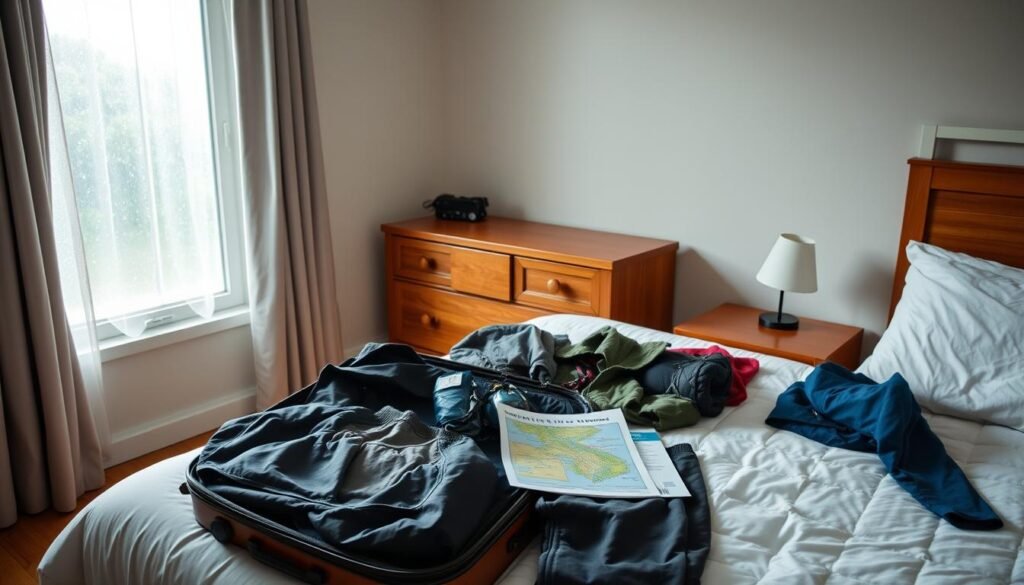
A few smart moves on bookings and packing let me roll with Vietnam’s rainy and dry rhythms. I plan so storms become short detours, not trip enders.
Booking strategy
I book coastal hotels early for July–August and around Tet because rates jump and rooms fill fast in Hoi An, Da Nang, and beach towns.
I hunt low-season value in shoulder months like Apr–Jun and Sep–Nov, accepting some mixed weather for quieter streets and lower prices.
Packing list by region
- North: warm layers for cool mornings and variable temperatures.
- South: lightweight rain jacket, quick-dry shoes—afternoon downpours are intense but brief.
- Central: sun protection and a plan for typhoon-affected conditions in Sep–Nov; Nha Trang can see heavy rainfall in Oct–Nov.
- Everywhere: reef-safe sunscreen, a compact umbrella, and breathable fabrics for long days.
Safety and flexibility
I track the central vietnam typhoon outlook in September–November and use refundable bookings when possible.
I build buffer days when flying between islands or remote towns because brief storms can delay short flights or impact road conditions.
On wet afternoons I switch to museums in chi minh city, coffee tasting in Hanoi, or a cooking class in Hoi An so my journey stays full and fun.
Conclusion
Choosing dates is less about a single month and more about aligning seasons with the places I want to explore.
I follow a simple rule: central beaches shine Feb–Aug, the south is easiest Dec–May, and the north rewards treks in spring or autumn. That gives me the most sunshine and the fewest weather hiccups for long days outdoors.
I watch central Vietnam in autumn for storms and pivot inland or head south when needed. For city plans, I pick Hanoi for crisp autumn light and Chi Minh City during dry months for rooftop evenings and market strolls.
For a quick seasonal check while I plan, I use an official seasonal guide — seasonal guide — to confirm forecasts and lock in flexible bookings.
With a region-first approach, my journey lands at the right season for Halong Bay views, Mu Cang Chai terraces, Mekong Delta greens, or long beach days.


